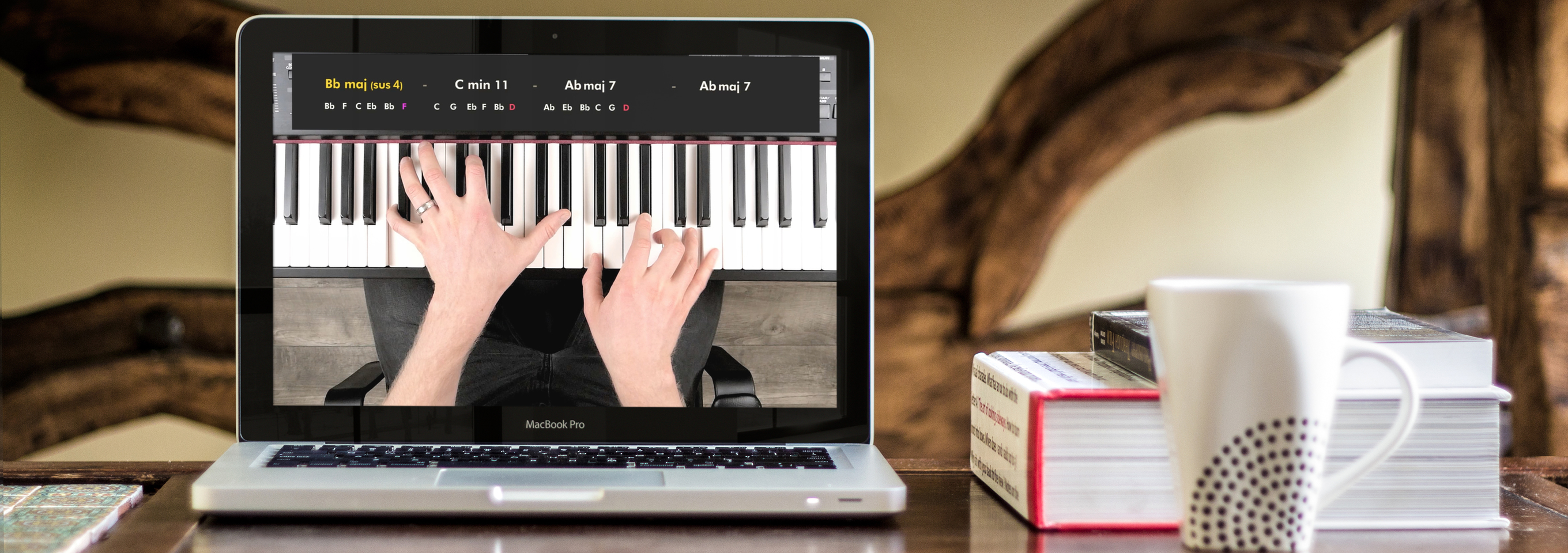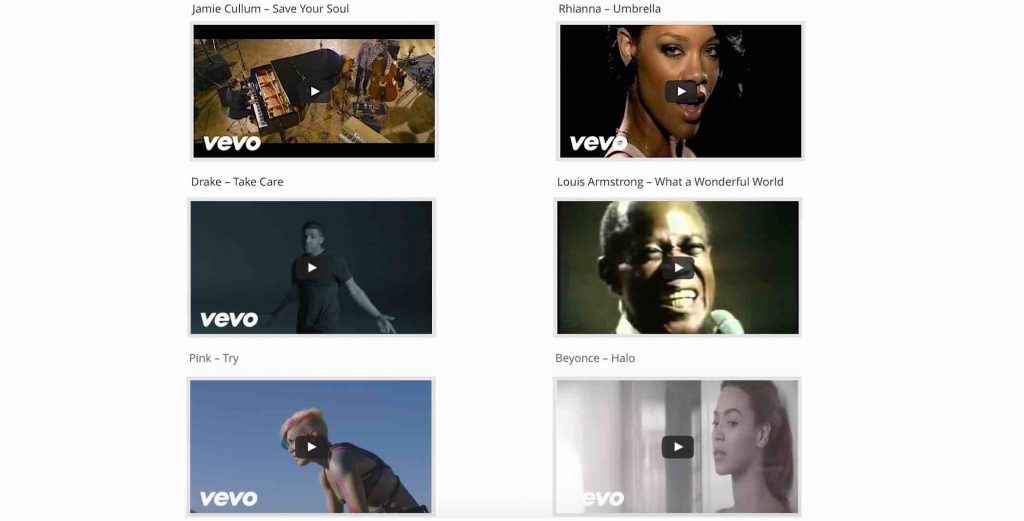Your Music Is Being Delivered
Thank you. Your Music Is Being Delivered.
Are You Making This Ear Training Mistake?
The biggest barrier to your ear’s development is constantly changing keys.
Most musicians change key from one song to the next – C minor, F# minor, Bb minor, and so on.
But there’s two problems with this:
1. You never spot the recurring patterns
Most music uses the same few notes and chords. The one thing changing is usually the key signature.
2. Your Tonal Color memory never develops
To play by ear, you must also learn the unique sound of each note within the scale.
These sounds are called ‘Tonal Colors’ – the root has a unique color, the minor 3rd has a unique color, and so on.

When you play in one key, your memory of each note’s color grows stronger.
In C minor, C sounds like the root every time you play it…
Eb sounds like the minor 3rd every time you play it…
But if you go and change key – then every note changes its color, based on the new key.
C might sound like the 5th now (in F minor), and Eb sounds like the minor 7th.
And all the memories that you had been building up are quickly smudged away – and you’re back to square one.
Most People Practice Things Backwards
Most musicians think that to master music, they have to practice in all 12 keys; Building up their playing little by little in one key, then a bit more in the next key, then the next key…
But this is a guaranteed way to NEVER master music. You’ll never scratch the surface to any one key, and you’ll stay confused about how music works forever.

I believe in doing the opposite:
Focus on ONE KEY first – live, breathe, and dream about that key for several months – until you TRULY learn to play by ear – and THEN transpose everything out into the other keys.
My Ear Training Breakthrough
Learning to play music by ear changed my life.
I used to be a ‘C grade’ music student who didn’t get music theory. I wrote bland sounding compositions, and I lacked confidence…
But since training my ear, I’ve enjoyed a lot of success…
I gained a Masters Degree in music composition…
I’ve composed music for the London Chamber Orchestra…
And I’ve taught hundreds of thousands of musicians through my YouTube channel.

My ‘One Key Ear Training’ System
The Musical Ear is my complete video course in ear training.
It’s the only system that teaches you in one key – from beginning to end.
Imagine the clarity you’ll get from watching 30+ video lessons – all taught in the same key.
For the first time you’ll get to focus on how music works, without the distractions of ‘Key Confusion’.

I’ll take you on the exact path that I went through when I trained my ear.
And I’ll share 15 years of my best epiphanies and insights – which you can go through in a fraction of the time it took me.
Here’s A Sneak Peak At What You’ll Learn
– ‘The Swaying Effect’: Why most music is not major, and it’s not minor – it’s BOTH. I’ll show you what I call ‘The Swaying Effect’ – which will change the way you think of music.
– Effective Interval Recognition: The 6 intervals you have to learn to play by ear (not 12 – just 6, that most music is built of).
– Why Interval Songs Don’t Work: Why singing Happy Birthday won’t help you transcribe a melody, and what professional musicians do instead.
– The Pentatonic Shape: How to spot this 5 note pattern in almost every song.
– Chord Progressions: How to identify chords by ear, and the 6 chords that make up most chord progressions.
– The Melody / Chord Relationship: When you know what the melody note is, how to figure out what the chord is.
– ‘The Half-Step Location Method’: How to locate a melody’s position within the scale, when you hear a half-step.
– Tension Notes: The 2 notes that tell your ear where a melody is within the scale.
– Chord Inversion: Why inversion is used and the most common inverted chord.
– Common Shapes: I’ll show you the 13 most common melodic shapes and the 11 most common chord progressions.
– The Modes: I’ll show you the 4 modes that actually get used – and you’ll discover the characteristic chords for each scale.
– The Harmonic Minor Scale: Charactersitic chords, modified techniques, and common shapes.
– Transcribing Blues: The 12 bar blues, common variations, and understanding the Blues Scale.
– Modulation: I’ll show you the 3 most common key changes – which make up 80% of modulations.
– The Tierce de Picardie: One of my favorite compositional techniques.
– Playing In All 12 Keys: And to end, I’ll show you how to play in all 12 keys again – we’ll take everything we learned in one key, and apply it to the 11 other keys.
– Dozens of Transcribing Case Studies: Watch me play real life songs by ear, and walk you through my thought process.
Bonuses
In addition to the video lessons you’ll also get:
– Video Downloads | Download all lessons to your computer, or watch them in the members area.
– Audio Lessons | You have the option to listen to the course as audio – while you’re driving or ‘on the go’.
– Listening Library | 80+ real life songs embedded as YouTube videos following each lesson. Just click ‘play’ and put your ear to the test.

– Mentor Emails | You’ll receive weekly emails from me – keeping you on track over the long term.
Who Is The Musical Ear For?
The Musical Ear is for adult musicians (18+).
5+ years playing experience.
Piano Skills Required: Even if piano is your 2nd instrument. This is so you can play a complete cover of any song – melody, chords and bass line.
Reading music is NOT necessary.
Do you experience any of the following?
– “I lack confidence in music because I never had formal training”
– “I’m overwhelmed with information and I don’t know what to practice”
– “I’ve hit a plateau – I’m not seeing progress and I desperately want to break through to the next level”
– “I have all the passion in the world for music, but I don’t have much to show for my efforts”
– “I long to express my ideas through my instrument – but it takes me a long time to find the notes in my imagination, and I usually loose the tune in the struggle”.
– “Composition drags on for weeks and months, and most of my pieces never get finished”
If you feel any of the above, The Musical Ear is probably right for you.
Who Is The Musical Ear NOT For?
Not for Beginners: You must have at least 5 years playing experience.
Not for Children: This course has a university style delivery, and is for adult musicians (18+).
Not for Full-time students: If you’re already in full-time study, it will be hard to focus on this course or to see results.
Testimonials
Here are some voicemail messages I received from Musical Ear members:
How Much Does The Musical Ear Cost?
If you were to meet with a private teacher, it would cost thousands of dollars to cover this much material.
But thanks to the wonders of the internet, I’m able to package this training into video format – for a fraction of the price.
The price of The Musical Ear is $297.
This is a one-time payment. You get lifetime access to the course.
And I’ll send you any future updates or upgrades…
Even if the price increases in future.
90 Day Money Back Guarantee
I realize this might be the biggest investment you’ve made in your music education to date. And I don’t want this to stop you from trying it.
So that’s why I give you my 90 day Money Back Guarantee.
If for any reason you decide it’s not right for you, just email me within 90 days and I’ll refund 100% of your purchase – no questions asked.

And if you’re on the fence, I would rather you try the course and ask for a refund – than not try it at all.
Quick-fire Q & A
How many lessons are in the course? 32 videos – each roughly 15 minutes.
Do I really have to do all playing in one key? No – this is just for your ear training practice. You can still play your other repertoire, and jam with your band in other keys.
Can I choose my own key? Yes, but I recommend using the key of C minor / Eb major – since that’s the key I teach in.
How long should I play in one key? I recommend transcribing in the same key FOREVER. I still do transcribe in the same key – and always will do. But the first 4 – 12 months is when most of your ear’s development will probably take place.
Will I be able to play 100% of music by ear after watching this course? No – ear training is an ongoing practice. You never reach a state of ‘perfection’ – but you can get very close. Within a 2 year period it’s realistic that you could play 95% of the music you hear everyday.
Are the videos downloadable? Yes – you have the option to download all videos to your computer, or watch the lessons in the member’s area of the website.
The price of this course is more than anything I’ve bought before. What makes this course so special? The Musical Ear resembles a university degree in music – no exaggeration. It goes far beyond anything else I’ve seen. It packs in 10 years of my own insights and epiphanies into a concise course, and is offered at a fraction of the price of most people’s music education.
Can I trust you with my credit card info? Yes – this website has an SSL certificate, and all payments go through PayPal’s secure checkout. If you’re not happy with a payment you made, you can email me for a refund within 90 days. In addition to this – PayPal gives you seller protection for 90 days – so you can dispute any transaction with PayPal too.
I’m not sure if this course is right for me. What should I do? I truly want this course to help you. So if you’re on the fence, I’d rather you try the course and ask for a refund – than to not try it at all.
To get started, click the orange button below and fill out the one page checkout. Then you can start going through the course today.
More Testimonials
Here’s a handful of messages I received by email from Musical Ear members:
“Wow, played all videos and feel like I have taken a 4 year Berkley in 5 hours. A wonderful thesis in music theory and practical. I think your presentation hits on all cylinders and will be a wonderful tool for students. Way ahead of your original works which in themselves were excellent.
[…]
I’m just up to your Transcribing Jazz Lesson part 3 and what a wonderful piece of work that is. The way you have created your Ear Training course is pure genius and I realize I need to go right back to the beginning and slowly work through it. Not just from an ear training standpoint but there is so much theory in it, it is a gold mine of information and presented in a way I enjoy – factual and to the point without wasting time.”
Ray Huckell, Toronto, Canada.
“These new tutorials are outstanding Julian! Especially for pianists like me who lack the fundamentals and have an insatiable passion to improve ear training. You so very beautifully explain in simplest terms the spectral relationships between melody, harmony and bass within an octave. I’ve spent a lifetime sitting in front of the piano trying to understand it and these new tutorials give us all a much greater shortcut to do just that!
[…]
I realized as we drove yesterday to go fishing and listened to pop radio that I was using my ear in a new and different way, to understand and study intervals. I feel had I been taught this particular method I’d have been conscious of my abilities at a much earlier age. It makes me smile to finally realize at my age I can do this. It was you who awakened me to the logic and process.”John Riger, Aspen, Colorado.
“Hey Julian! Just checked your ear training playlist and I’ve listened to it already for the 8th time, and I love it!!! Great examples and I love your melodies. For me, and I can only speak for me, the content is clear and on point. I really like the way you understand music, for me you are the best teacher!
I started playing keys about 1.5 half year ago. Since then I’ve watched so many videos about chord functions, relative major minor stuff etc, but since hearing your ear training I’ve got a different view on chords and intervals in a very positive way. I used to struggle with recognizing chords and used to feel overwhelmed, but you’ve given me the tools which makes it a lot easier to transcribe chords.
[…]
Since I heard your ear training material I listen to music in a different way – really thanks for that, it makes me greedy for more! Thanks again, and I’m waiting like a child for christmas for more new stuff!!!”Adrian Ryzka, Vienna, Austria.



